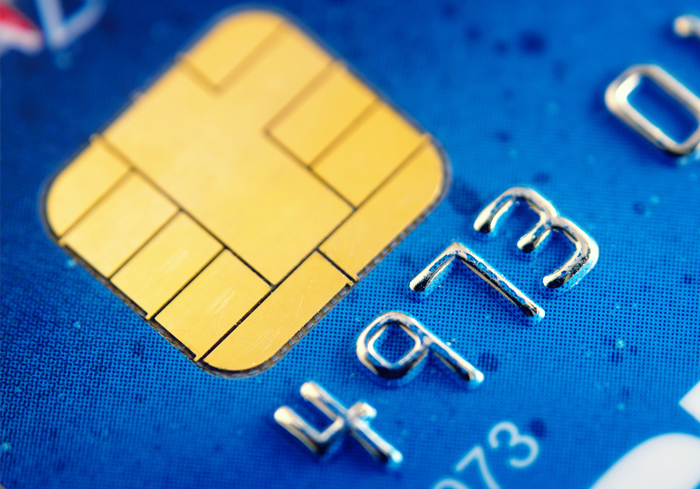
Most of the largest retailers have moved to EMV-based systems, but smaller businesses are well behind. And of those that have embraced the chip card standard, most also are including Near Field Communication chips in the terminals, executives at terminal manufacturer VeriFone Systems Inc. noted during a fiscal third quarter earnings call with analysts Sept. 4.
The question is, are the EMV or NFC functions activated? In all likelihood, they’re not. “Most Tier 1 retailers already have EMV in place,” VeriFone CEO Paul Galant said “It’s really about turning the system on as opposed to putting in terminals.”
In the U.S., about 30 percent of terminals thus far are equipped to accept EMV cards, Galant noted on the call. That leaves millions of terminals remaining that must be converted so merchants can avoid taking on liability should they not be able to accept a presented EMV card starting in October 2015.
Most EMV terminals VeriFone is shipping include NFC chips (same ISO 14443 standard, with EMV representing contact payment and NFC contactless), Galant noted. “What we shipped in the third quarter, almost every EMV terminal had an NFC chip in it. It’s not a terribly expensive piece of equipment, and it kind of safeguards you from future opportunities,” he said.
More than 80 percent of VeriFone’s products shipped in the U.S. during the quarter were EMV-capable, up from approximately 70% in the first quarter, Galant said. Also during the period VeriFone upgraded 14 top retailers to its MX 900 series of EMV devices, including an order from one of the world’s largest retailers for 40,000 MX 900 units, he said. None of the 14 retailers were in the hospitality industry or quick-service restaurants, though Galant said VeriFone believes they will be coming aboard with EMV soon.
“It’s important to note that a similar percentage of our terminals in the U.S. included embedded NFC chips, and the migration to EMV will certainly significantly increase the installed base of NFC terminals and the potential for the use of NFC in payment and commerce, moving forward,” Galant said.
That could play an important role for merchants should Apple, as many are expecting, finally launch an NFC-based smartphone and/or wristband this fall.
In the U.S., the increased focus and importance of EMV and security also is driving demand for VeriFone’s Payment-as-a-Service offering, which incorporates EMV terminals with a simplified certification process. It also includes so-called end-to-end encryption to protect cardholder data at the device level and at the back end to reduce the scope and cost of maintaining PCI compliance.
Driving interest in the service are merchants, acquirers and integrators that are becoming increasingly interested in secure devices and an easier path to enabling EMV acceptance, managing the intensifying risk posed by cyber-criminals, and reducing the burden of compliance obligations, Galant said.
The bottlenecks to EMV migration have been certifications, Galant said. “It is quite a cumbersome process to certify the EMV terminals across the very large landscape of issuers, of card networks and of acquirers, “ he said. “We’ve been, at VeriFone, working at everything to help the acceleration so that our merchants can get their environments up and running and reduce their exposure to the cyber criminals. So, it’s really been a lot of work, a grassroots effort, a lot of innovation on the technology side.”
During the quarter ended July 31, VeriFone reported total net revenues of $475.9 million, up 14.4 percent from $416 million a year earlier. The company reported a consolidated net loss of $28.1 million, up considerably from a $1.9 million loss a year ago.